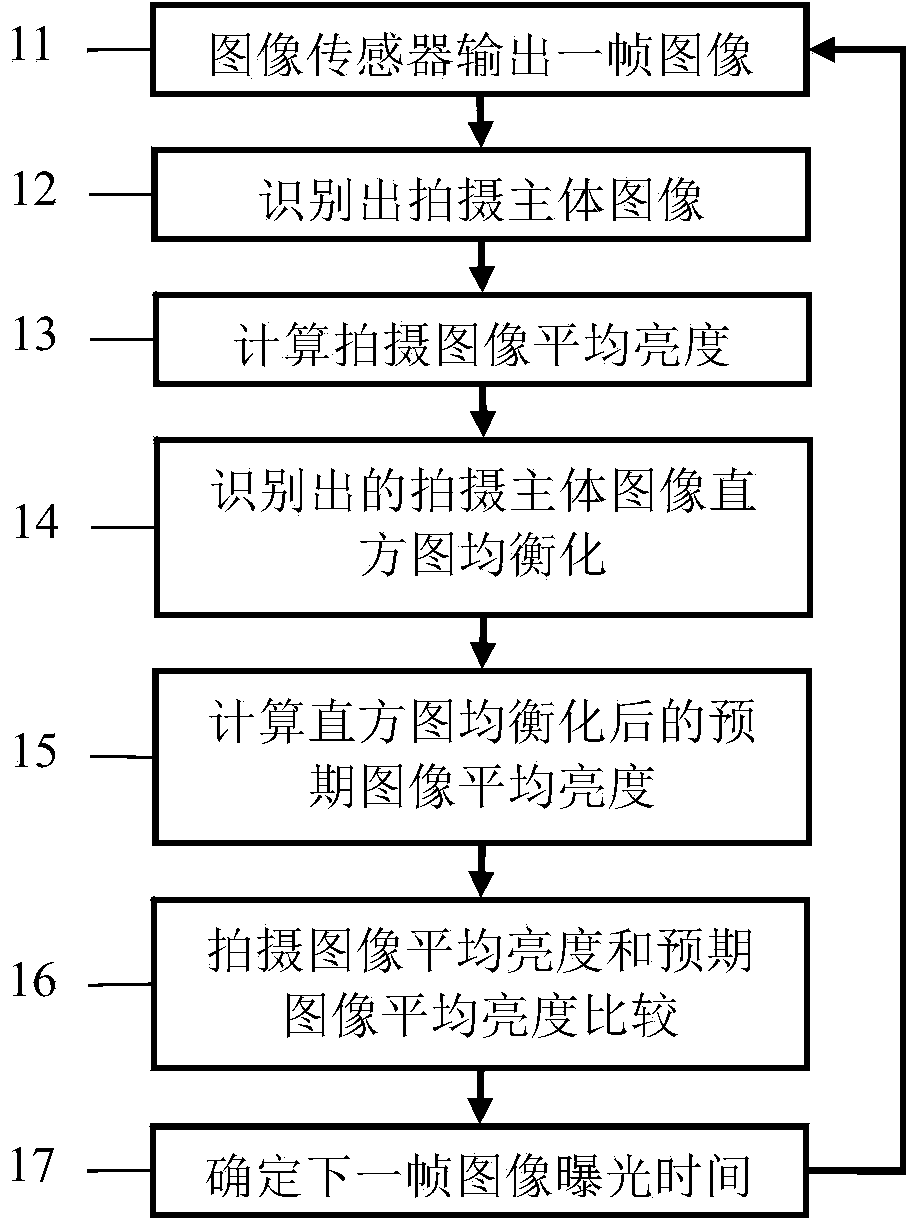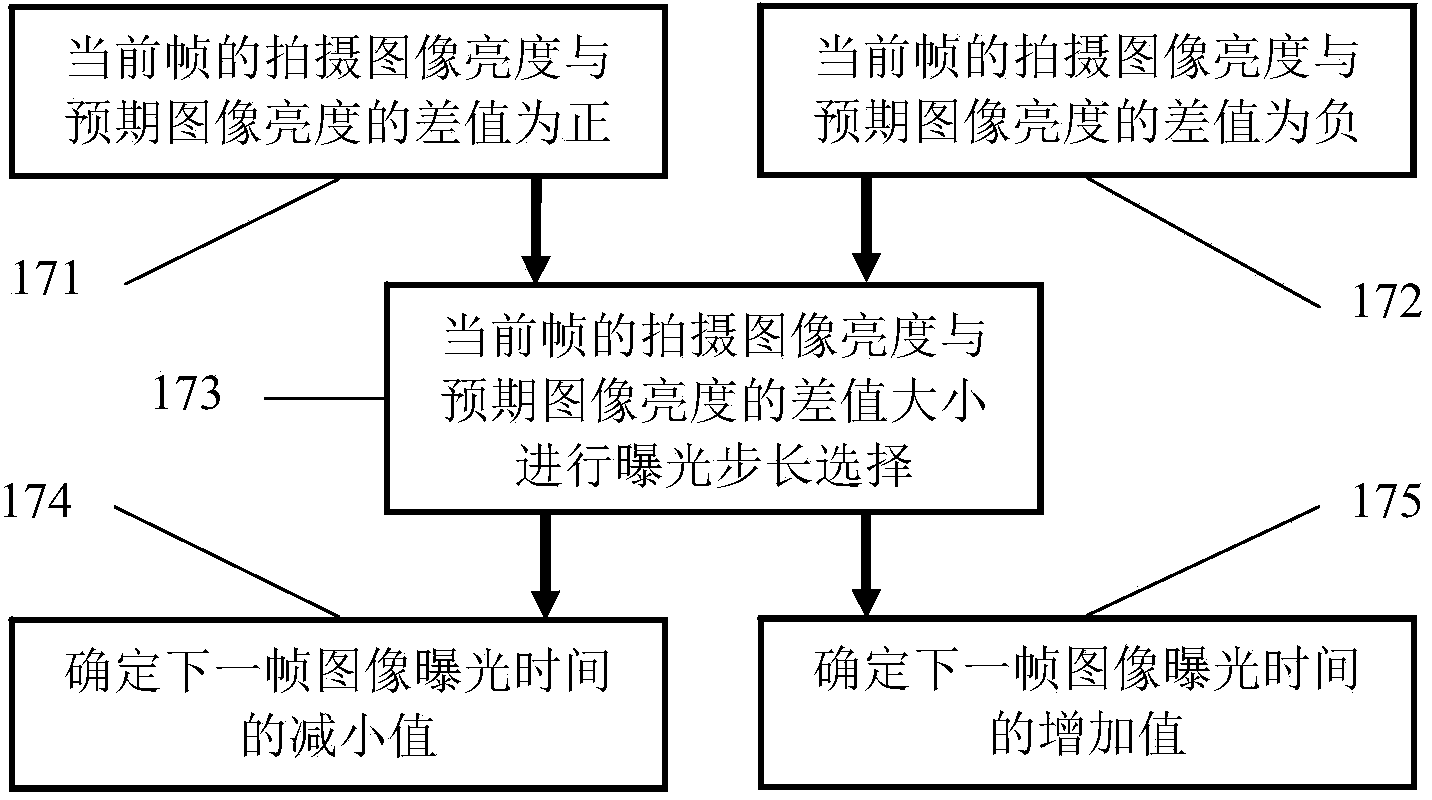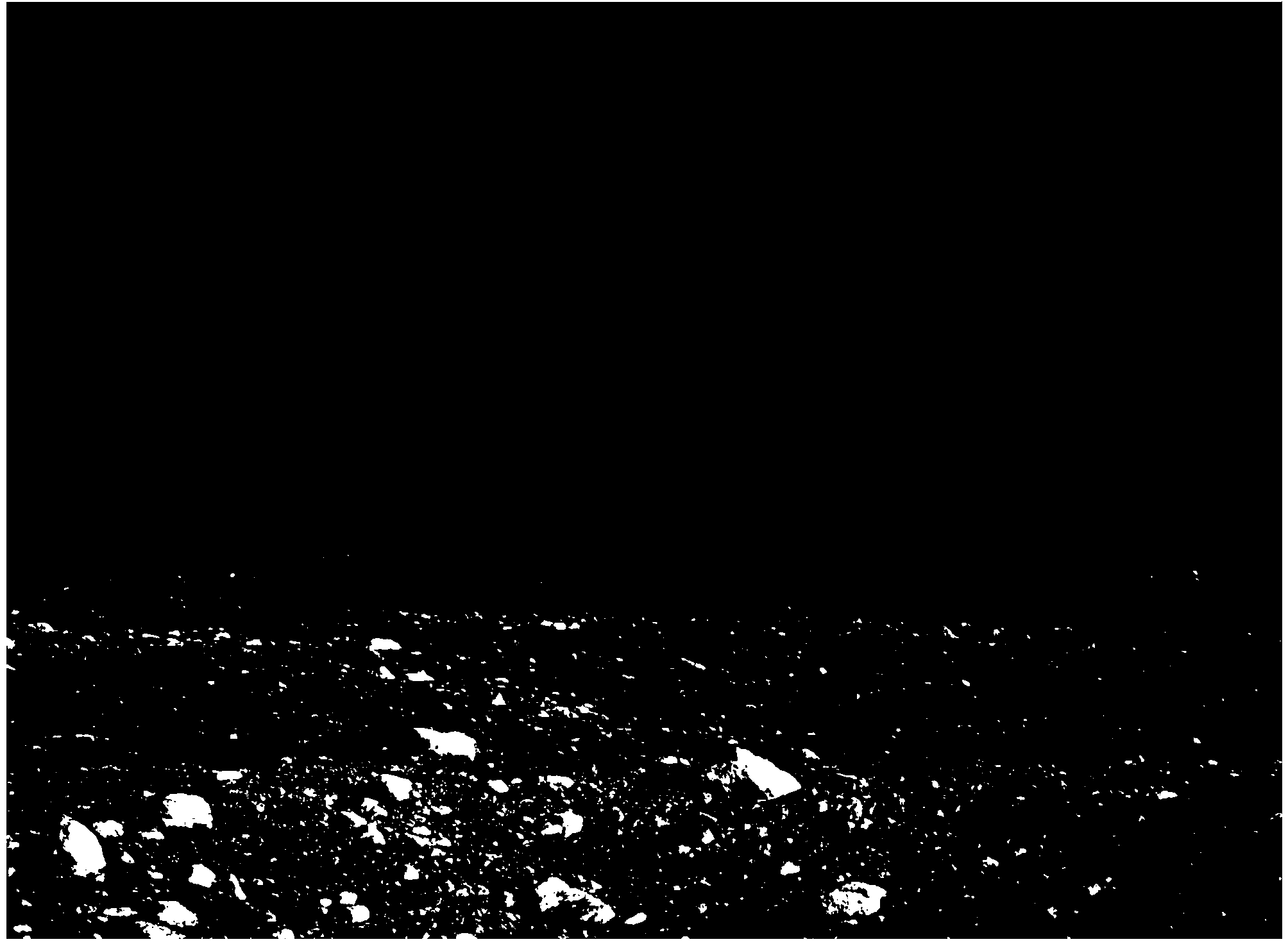Automatic exposure control method based on adaptive expected image average brightness and suitable for space exploration imaging
A technology of average brightness and space detection, applied in image communication, color TV parts, TV system parts, etc., can solve the problem of large interference from non-shooting subjects, calibration of brightness and exposure values, inability to set aperture or shutter, etc. problem, achieve the effect of adjusting the exposure value stably, accurately adjusting the exposure value, and avoiding exposure flickering
- Summary
- Abstract
- Description
- Claims
- Application Information
AI Technical Summary
Problems solved by technology
Method used
Image
Examples
Embodiment Construction
[0033] The present invention will be further described in detail below in conjunction with the accompanying drawings and specific embodiments.
[0034] An automatic exposure control method based on the average brightness of the adaptive expected image suitable for space detection imaging. First, the current frame image is segmented with an adaptive threshold value to identify the main image of the current frame, and the current frame shooting is obtained from the average brightness of the main image of the current frame. The average brightness of the image, and then perform histogram equalization processing on the recognized main image of the current frame to obtain the average brightness of the expected image after histogram equalization, and then according to the positive and negative sum of the difference between the average brightness of the captured image and the average brightness of the expected image The exposure time is selected according to the size of the exposure ti...
PUM
 Login to View More
Login to View More Abstract
Description
Claims
Application Information
 Login to View More
Login to View More - R&D
- Intellectual Property
- Life Sciences
- Materials
- Tech Scout
- Unparalleled Data Quality
- Higher Quality Content
- 60% Fewer Hallucinations
Browse by: Latest US Patents, China's latest patents, Technical Efficacy Thesaurus, Application Domain, Technology Topic, Popular Technical Reports.
© 2025 PatSnap. All rights reserved.Legal|Privacy policy|Modern Slavery Act Transparency Statement|Sitemap|About US| Contact US: help@patsnap.com



